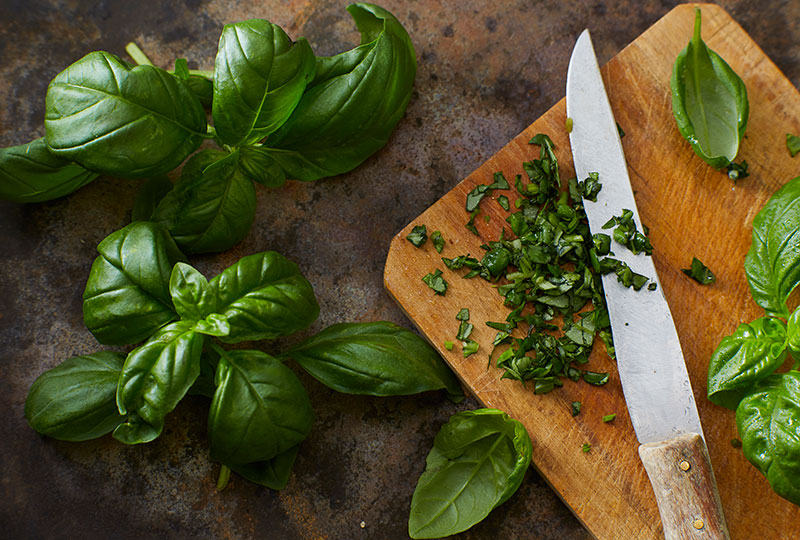Some flavor-boosting tricks that make a heart-healthy diet taste great.
Eating a heart-healthy diet that still tastes delicious is not hard if you have a few kitchen tricks up your sleeve. Try these four easy ideas for enhancing your favorite dishes without added saturated fat, calories or sodium.
Citrus
Lemon, lime, grapefruit and orange juice are all great options for using in marinades and salad dressings as a replacement for oil. An inexpensive hand juicer makes it easy to extract juice any time you want it and can be found at almost any store that carries kitchenware for about $5. But, simply squeezing juice into a bowl does the job, too.
In addition to juice, citrus zest perks up recipes with a fresh, vibrant taste. A hand grater works well for this purpose. Try Citrusy Spinach Salad with Walnuts, which incorporates fresh grapefruit and orange juice to make a lively low-calorie, low-fat dressing for greens. Make an easy Asian-inspired marinade by adding orange zest to a mixture of low-sodium soy sauce, honey, sesame oil and sesame seeds. Give your pancakes a boost without lots of syrup and butter by grating lemon zest in the batter.
Vinegar
Marissa Wertheimer, a registered dietitian with the Vanderbilt Medical Weight Loss Program, suggests adding a splash of heart-smart vinegar to add flavor to foods without sodium, fat or calories: “Vinegar tends to brighten the flavors of a dish, and bring sweetness and a bit of tartness.” Try adding a splash of balsamic vinegar to chicken or vegetables, such as mushrooms or Brussels sprouts at the end of cooking. Wertheimer suggests trying one of her favorite recipes for Brussels sprouts with a balsamic honey glaze.
Fruity vinegars such as raspberry balsamic, red wine vinegar or white wine vinegar make great salad dressings, too. Strawberries and blueberries will come alive with a splash of balsamic vinegar and a bit of chopped mint for a unique dessert that’s delicious plain or on some low-fat frozen yogurt.
Herbs
Using herbs is also a great way to reduce fat, calories or sodium in recipes without sacrificing flavor. Basil and oregano complement tomatoes; dill does the same for fish; try rosemary with poultry or pork; add cilantro to salsas or beans; and mint works well in beverages or desserts. Spice up meat, fish or vegetables with a rub by simply putting your favorite herbs in a food processor with a drizzle of olive oil or fresh citrus juice and pulse until a paste is formed. Rub it onto the meat, and let it sit for a bit before cooking to allow the herbs to infuse your food. Next time you are looking for a new spin on your vegetables try Grilled vegetable kebobs with herbs to take your dinner from ordinary to extraordinary.
Fruit and vegetable purees
Pureed fruits work well in a variety of recipes, not only to reduce sugar, fat and calories, but also to bump up important nutrients in your daily diet.
As a substitute for oil in baking items such as cakes or muffins, think mashed banana, pears or applesauce. To substitute the fruit for oil, as a general rule, use half fruit puree and half fat. For example, if a recipe calls for 1 cup of oil, use ½ cup applesauce and ½ cup oil. You may need to reduce the recipe’s baking time by up to 25%, so be sure to keep an eye on it. Cooked pumpkin, beets and squash all work well for baking, too. Puree some bananas and strawberries to make Banana Berry Cream, a frozen treat that is a yummy substitute for high-fat, store-bought ice cream.
A coulis is a fancy name for a French sauce which can be sweet or savory, depending on what it is meant to accompany. Typically, a coulis is thick and evenly textured. These sauces can be made from fruits, such as raspberries, to accompany ice cream, fruit salad, plain cakes like angel food or pancakes. Vegetables such as cooked peppers are commonly used as coulis for enhancing a meat or fish dish.
It’s easy to make a coulis. For fruit, using fresh (or frozen and defrosted) berries, peaches or mangoes, blend them until smooth in a food processor with some Splenda, orange juice or honey. The same technique works for vegetables such as cooked sweet potatoes or red peppers. The sky is the limit when experimenting with a coulis.
Don’t resign yourself to a life of bland foods just because you want to eat healthy and nutritiously. With a few simple tricks you can savor the flavor of your heart-smart diet.
Stacey Kendrick, MS, is a health educator with more than 20 years of experience in wellness and population health. She is a mother to two adult daughters. In her free time, she teaches healthy cooking classes, runs, gardens and enjoys backyard bonfires.

